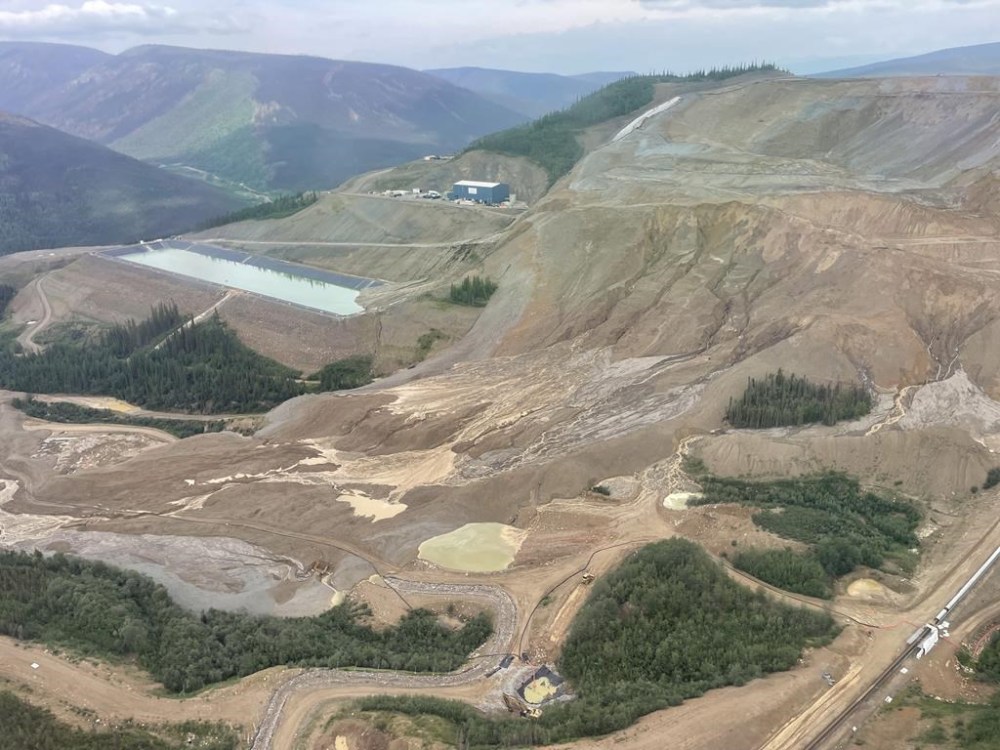Yukon told of ‘potential leak’ from toxic pond at failed Eagle Gold mine
Advertisement
Read this article for free:
or
Already have an account? Log in here »
To continue reading, please subscribe:
Monthly Digital Subscription
$0 for the first 4 weeks*
- Enjoy unlimited reading on winnipegfreepress.com
- Read the E-Edition, our digital replica newspaper
- Access News Break, our award-winning app
- Play interactive puzzles
*No charge for 4 weeks then price increases to the regular rate of $19.00 plus GST every four weeks. Offer available to new and qualified returning subscribers only. Cancel any time.
Monthly Digital Subscription
$4.75/week*
- Enjoy unlimited reading on winnipegfreepress.com
- Read the E-Edition, our digital replica newspaper
- Access News Break, our award-winning app
- Play interactive puzzles
*Billed as $19 plus GST every four weeks. Cancel any time.
To continue reading, please subscribe:
Add Free Press access to your Brandon Sun subscription for only an additional
$1 for the first 4 weeks*
*Your next subscription payment will increase by $1.00 and you will be charged $16.99 plus GST for four weeks. After four weeks, your payment will increase to $23.99 plus GST every four weeks.
Read unlimited articles for free today:
or
Already have an account? Log in here »
Hey there, time traveller!
This article was published 03/01/2025 (312 days ago), so information in it may no longer be current.
WHITEHORSE – The Yukon government says it has been told there is a “potential leak” in a containment pond holding toxic water at the Eagle Gold mine, where millions of tonnes of contaminated rock were spilled last year.
It says that receivers PricewaterhouseCoopers Inc. informed the government and the First Nation of Nacho Nyak Dun about “irregularities in storage pond volumes” on Dec. 28.
A statement from the government says regulatory and enforcement agencies have been told, and enhanced monitoring of groundwater and surface water is underway to determine if a leak from the newly constructed pond is having an impact on nearby Haggart Creek.

It says that the pond’s water is being temporarily diluted in the meantime to “reduce its toxicity.”
“The receiver is overseeing and facilitating the work with the input and support of the Yukon government and is responsible for implementing all directions issued by the Government of Yukon and federal regulators,” the statement says.
Tests in November had shown mercury levels above “water quality objectives” at four sampling sites, and other tests have shown cobalt and cyanide levels above quality standards in Haggart Creek.
The mining operation has been closed and operator Victoria Gold Corp. put into receivership since millions of tonnes of cyanide-laced rocks spilled from the facility 480 kilometres north of Whitehorse in June.
The mine used chemicals to extract gold from piles of ore in what is known as heap leaching.
The Yukon government said it was working with the receiver and a Nacho Nyak Dun technical team to determine the cause of the pond volume “irregularities” and potential environmental impacts.
The First Nation couldn’t be reached for a comment, but in December the nation’s chief Dawna Hope wrote an open letter asking Canadian Auditor General Karen Hogan to look into the Yukon government’s handling of the “catastrophic mining failure.”
“Specifically, we wish to highlight the Government of Yukon’s ineffective, negligent, and environmentally perilous approach to mineral governance, the implications of this approach for governmental priorities, and the disproportionate impact of this approach on Indigenous people in the north,” the letter says.
Neither PricewaterhouseCoopers nor Victoria Gold could be reached for comment.
This report by The Canadian Press was first published Jan. 3, 2025.

